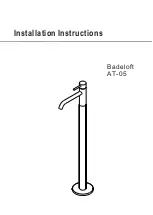
Step Three – Install Motion Sensors
The motion sensors must be installed at a
height between 1.5m and 2.4m (5 and 8ft). The
recommended height is 2.3m (7
1/
2
ft). They can be
installed on a flat wall or in the corner of the room.
To be most effective, motion sensors should be
placed in the most vulnerable areas and key entry
points (such as the hall or living areas). Each
sensor is labelled ‘Sensor 1’ or ‘Sensor 2’.
1. Remove the back plate of the motion sensor,
this is the mounting bracket. Use a Philips
screwdriver or your drill to punch out the
appropriate holes at the bottom of the
mounting bracket (see illustration).
2. If you are installing the sensor on a flat wall
punch out the two centre holes at the bottom of
the mounting bracket to ensure the sensor faces
down. If you prefer corner mounting, punch out
the holes at each side. Remember that each
sensor must face downwards, so you must only
punch out holes at the bottom of the mounting
bracket.
3. After the holes have been punched or drilled,
clean off any rough edges. If the heads of the
screws do not fit flush inside the holes, the
sensor will not snap back into the bracket after
it has been mounted on the wall.
4. Secure the mounting bracket to the wall using
the screws and wall plugs provided.
This graph shows the side view coverage area for
the motion sensor’s lens.
Note:
Avoid positioning your sensors to
face windows and glass doors or any heat
sources and areas where temperatures
may change suddenly. These sensors are
for indoor use only.
Note:
The motion sensors are designed for
use with average sized pets. The sensors
should be located so that the pet cannot get
within 2m of the sensor. If you experience
false alarms from your pets, refer to the
bypassing section of the User Guide or keep
the pet away from the rooms where your
motion sensors are located.
35297 Monitor Quick Start Guide 16/1/07 11:20 Page 3


























